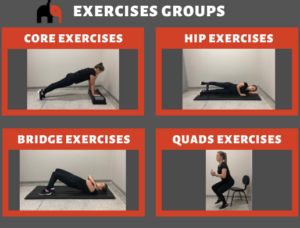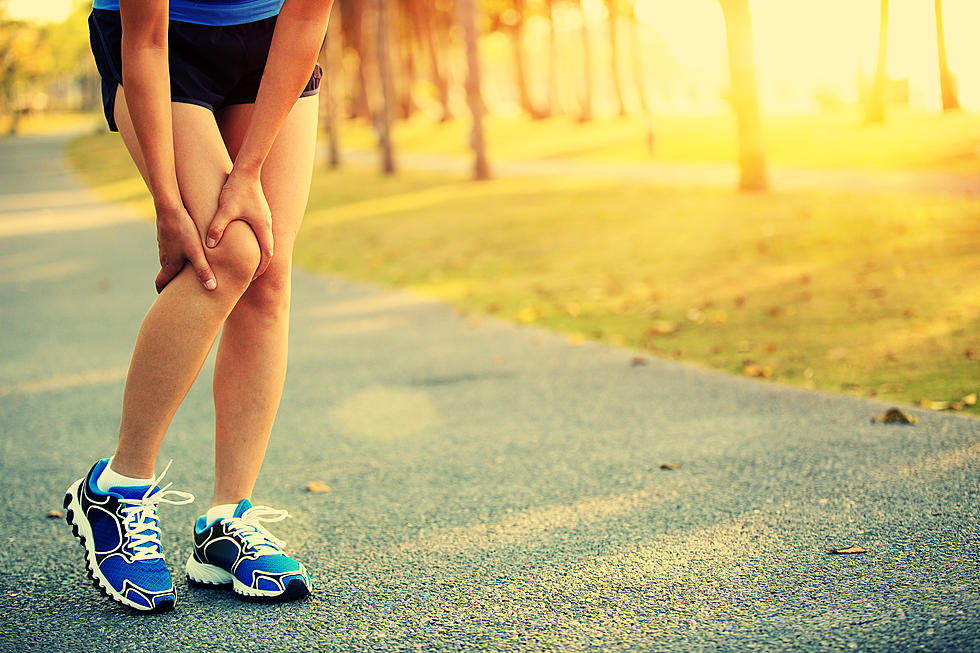Limited on time but want to learn about the current knee cap pain treatment options?
Below is a summary of all of the information contained within the ‘treatment options’ pages. This information does not replace consultation with a physiotherapist or doctor.
What works?
Exercise:
- Is the critical component for the treatment of knee cap pain.

- Choose hip exercises over knee exercises at the beginning, or if you are starting exercise for the first time.
- In the long-term, combining hip and knee exercises is the most effective approach.
- Monitor knee cap pain throughout exercise- it is common to experience knee cap pain when first beginning treatment.
- Complete one exercise from each group (on the right), at least 3 times per week.
Patellar taping/bracing:
- Taping can significantly reduce pain during running, climbing stairs and squatting.
- Taping methods need to be tailored to suit each individual.
- Bracing may help with reducing fear of pain and movement.
- Combining both taping and exercises may produce superior reductions in pain.
Shoe inserts:
- Can help reduce knee cap pain in at least 1 in 4 people, regardless of your type of foot (e.g. flat versus not flat feet).
- Try shoe inserts during an activity that normally causes you knee cap pain. If they immediately reduce your pain, they will likely benefit you.
- Prefabricated shoe inserts can be used- you may not need them after completing your rehabilitation exercises and have become stronger.
Other adjunct treatment options
You may want to consider these options with caution, as there is conflicting/ weak evidence to support them.
You may want to consider:
- Acupuncture- may be used to reduce knee cap pain but has not been compared to a placebo.
- Blood flow restriction AND high-repetition exercise therapy.
Try to avoid:
- Electrical stimulation.
- Ice therapy.
- Dry needling.
Surgery:
- Generally, not effective at helping people with knee cap pain- provides no additional benefit to exercise.
- Other factors to consider: costly, risk of infection.
Medication:
Limited evidence:
- Non-steroidal anti-inflammatory drugs (NSAIDs)- aspirin and naproxen tablets were no better than a placebo.
- Glycosaminoglycan Polysulphate (GAGPS)- one study presented improvement in pain after 1 year.
Very limited evidence:
- Chloroquine (antimalaria).
- Platelet Rich Plasma (PRP)- no strong evidence that it could be beneficial for people with knee cap pain.
